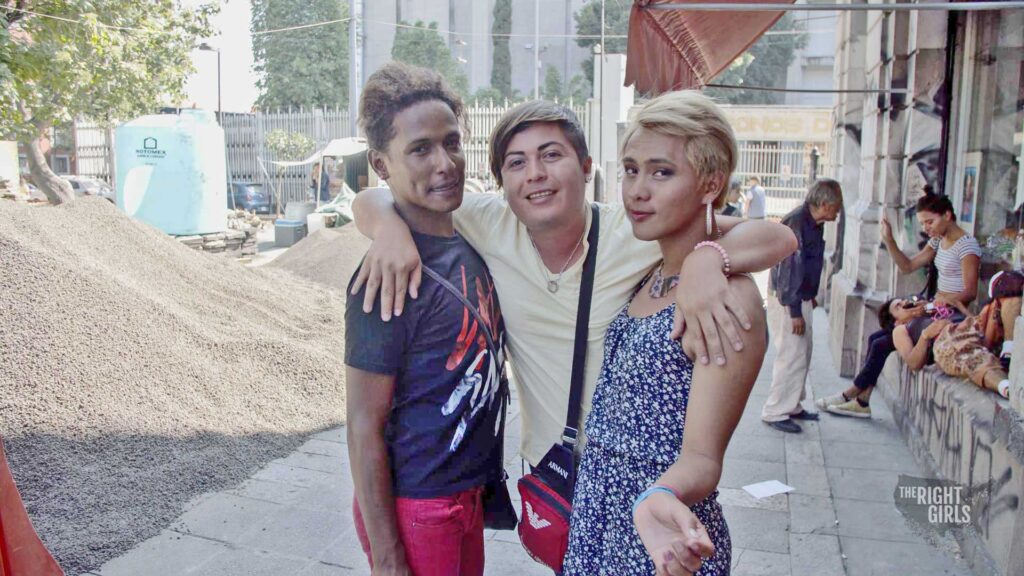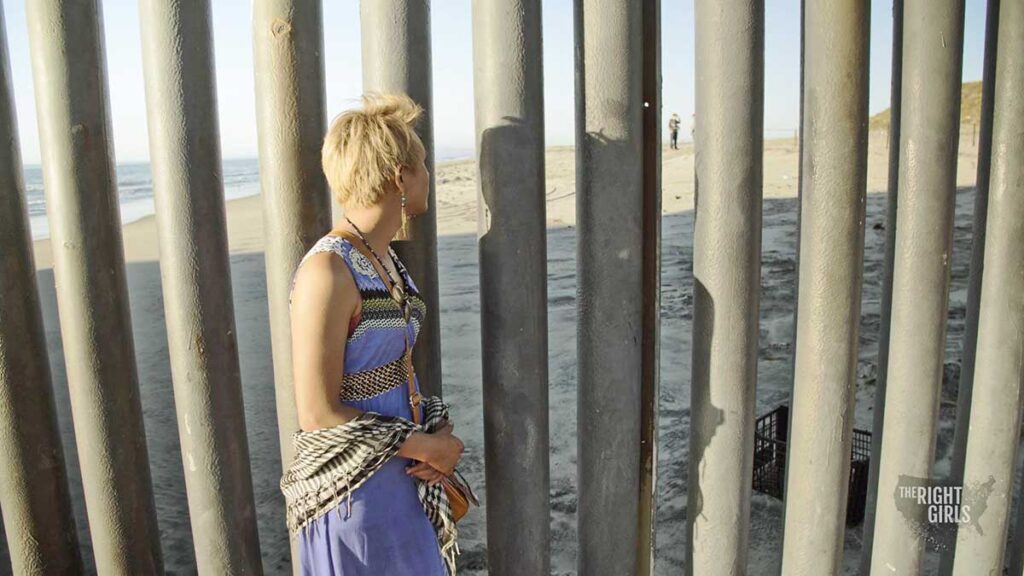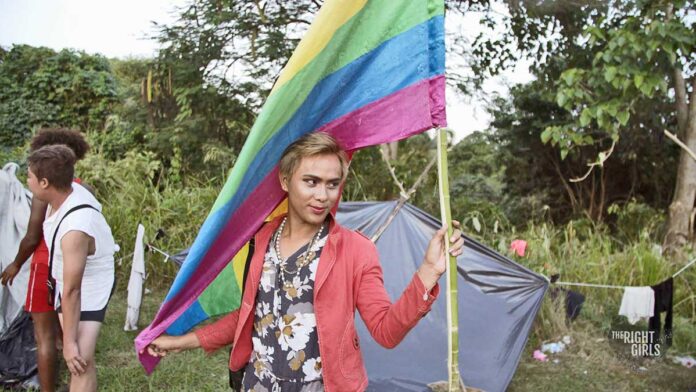The impassioned documentary “The Right Girls,” chronicles three transgender women in 2018 as they journey 2400 miles through Mexico to America with the “Migrant Caravan.” The film, which is now available on iTunes, Amazon, and other streaming services as well as DVD, is shot mostly on the road as the young women — Valentyna, Joanne Stefani, and Chantal — walk, find places to sleep, hitch rides, and fend off harassment. They often wash by using a wet wipe, as bathing is infrequent. As one subject indicates, they take the opportunities they have.
The experiences and camaraderie among the women are palpable from the start. There is mutual support as these migrant trans women struggle together during the arduous trek. When Valentyna gets emotional, Chantal comforts her. When Joanne, who is separated from her friends, reunites with them, there is joy. They encourage each other to keep going and not give up. They are often tired but generally not discouraged; this is especially evident during an episode when they hope to hitch a ride on a truck that is accepting women and children. However, as trans women, they are not prioritized.

“The Right Girls,” directed by Timothy Wolfer and written by Jonny Orlansky, allows each subject to tell their story about wanting to find a better life in America. They all want to be accepted as trans woman and thought that would be easier for them in the United States. Some also hope to make money to send back to their poor families.
Valentyna, who is from El Salvador, fled her home after her business was threatened by gangs. Likewise, Chantal, who is also Salvadorian, is escaping a bad relationship, where her partner abused her. Joanne, who is a transwoman of color from Honduras, experienced discrimination and racism because of her gender identity and skin color. She did not finish high school because of bullying. She also explains that she was raped and abused by members of her family. All three women hope to cross the border together and receive asylum in America.

“The Right Girls” explains that only 1.5% of the 5000 members of the caravan identify as LGBTQ. The journey is dangerous. In addition to the perils of heat and dehydration as well as injuries, there is the possibility of robbery, rape, kidnapping, and being murdered along the way. The transwomen feel especially at risk because they are “seen differently.”
At one point in the film, they receive assistance from external activists who help organize the LGBTQ caravan and assist with the asylum process. It is through these efforts that Valentyna, Joanne, and Chantal are able to get on buses to Tijuana where they can cross the border. Valentyna is worried that because she does not have proof of her suffering, it will jeopardize her request for asylum. There are fears of detention once they arrive in the border towns. When the women arrive in overpopulated Tijuana, they are soon dispersed to different towns.
But as tense as these scenes are, viewers will be hoping that the women will get to the border at all. The episodes on the way show the daily struggles that they face. Chantal explains that she earns money for food by selling cigarettes. The women are seen scrounging for clothing on the streets, finding discarded shoes, or rubbing alcohol. They are mocked for being transgender by others on the caravan, even fighting back when some men harass them. It is exciting when the women finally get a ride, but the excitement is short-lived when the driver makes them get off his truck.
“The Right Girls” keeps viewers engaged throughout, but there are times when Wolfer loses his way. A key scene where Chantal and Joanne express that they feel betrayed by Valentyna feels like a point raised but not investigated. An episode involving the women awaiting the chance to apply for asylum could also have been fleshed out more — especially given the treatment transgender migrants face in detention. In addition, only one of the subject’s fate after reaching the border is shown in the film. The others are addressed simply through a title card at the end. It feels like a letdown after spending so much time with the subjects. That may be the film’s point — that the people one meets can be “seasonal friends” — but greater detail about how things turned out for everyone would have been appreciated.
The title cards at the end also provide information about RAICES, a refugee and immigrant center, and the Santa Fe Dreamers Project, a group that advocates for rights for transgender migrants seeking asylum in the United States. These important organizations should have been better showcased in the film.
However, these are minor concerns for an urgent, cogent documentary that makes visible the experiences of migrant trans women seeking refuge in America.

